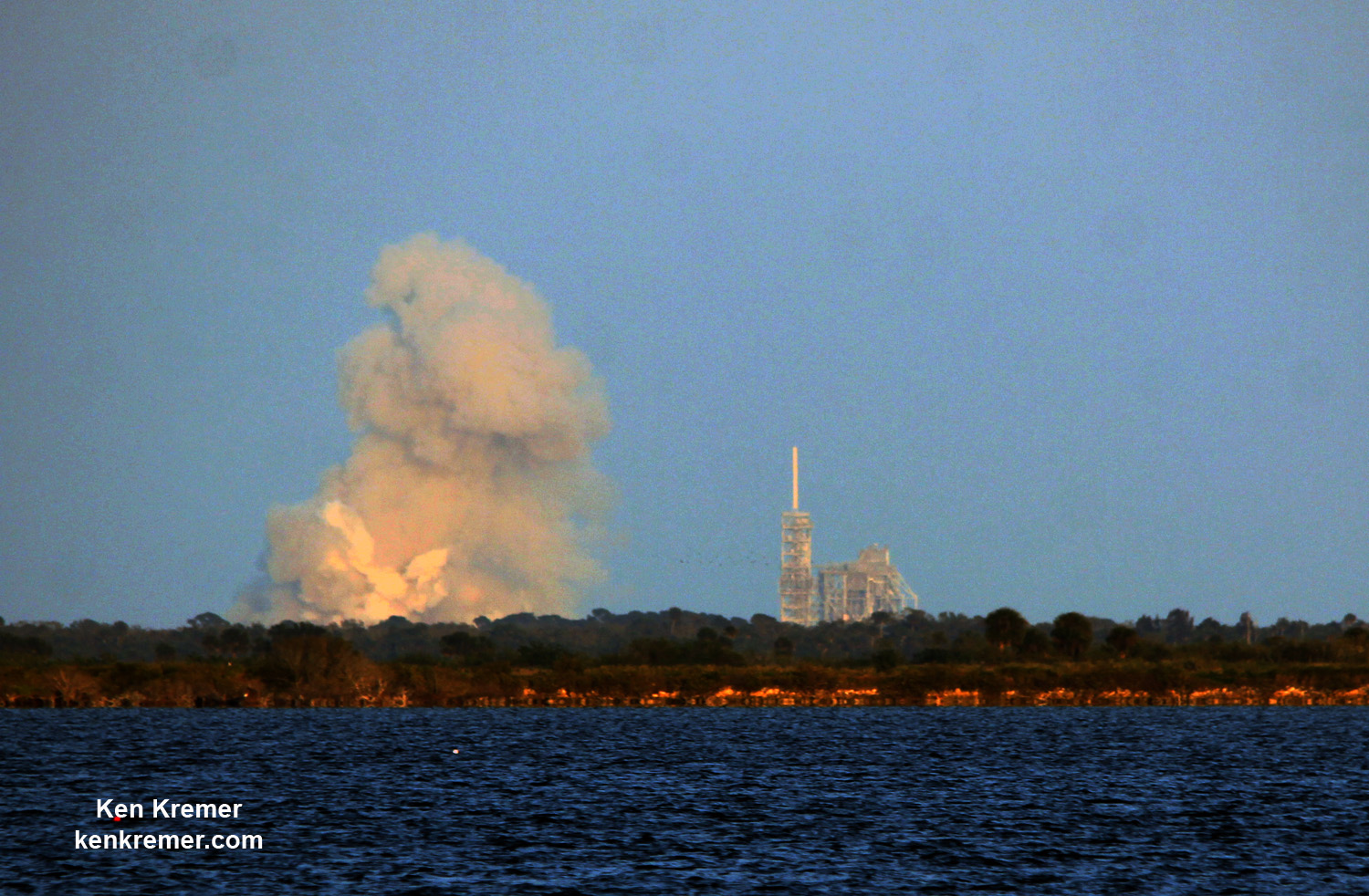
SpaceX conducts successful static fire test of Falcon 9 booster on Mar 9, 2017 as seen from Space View Park, Titusville, FL. Credit: Ken Kremer/Kenkremer.com
SPACE VIEW PARK/KENNEDY SPACE CENTER, FL - After a pair of back to back postponements presumably due to technical gremlins, the third time proved to be the charm at last as SpaceX engineers carried out a successful engine test of the Falcon 9 first stage this evening (Mar. 9) atop historic pad 39 at the Kennedy Space Center in Florida.
The brief test took place at 6 p.m. this evening, with an exciting eruption of smoke and ash into the air during the serene waning sunlight as I witnessed from Space View Park in Titusville, FL - which is a great place to watch launches from offering an unobstructed view across the inland waterway.
This critical engine test opens the door to what will be only the second blastoff of the SpaceX commercial Falcon 9 rocket from seaside Launch Complex 39A at NASA's Kennedy Space Center in Florida.
Liftoff of the Falcon 9 carrying the EchoStar 23 communications satellite is now slated for a post midnight spectacle next Tuesday, Mar. 14 from pad 39A at the opening of the launch window at 1:34 a.m. EDT.
The two and a half hour launch window closes at 4:04 a.m. EDT.
"Following today's static fire test, SpaceX is targeting the launch of the EchoStar XXIII satellite from Launch Complex 39A (LC-39A) at Kennedy Space Center in Florida on Tuesday, Mar. 14, SpaceX confirmed in a statement soon after completion of the test.
"SpaceX's Falcon 9 rocket will deliver the satellite to a Geostationary Transfer Orbit (GTO)."
The engine test was carried out absent the expensive satellite payload bolted on top, to keep it safely stored away in case of a repeat of the catastrophic Falcon 9/Amos-6 pad explosion last September at pad 40 during a similar test that destroyed both the rocket and payload and caused extensive damage to the pad infrastructure.
During today's static fire test, the rocket's first and second stages are fueled with liquid oxygen and RP-1 propellants like an actual launch and a simulated countdown is carried out to the point of a brief engine ignition.
The hot fire test generated a huge plume of smoke exhausting out the north side of the flame trench of Launch Complex 39A at approximately 6:00 p.m. EST, Mar. 9. at the opening of a 6 hour long test window.
The hold down engine test with the erected rocket involved the ignition of all nine Merlin 1D first stage engines generating some 1.7 million pounds of thrust at pad 39A - which has been repurposed from its days as a shuttle launch pad.
The Merlin 1D engines fired for about 3 seconds while the two stage rocket was restrained on the pad.
The smoke cloud soon dissipated and within 5 minutes there was barely a trace of what we shall soon see next Tuesday - if all goes well with launch processing and the ever changing sunshine state weather.
Titusville offers a prime viewing location for anyone interested in traveling to the Florida Space Coast to see this Falcon 9 launch in person.
The static fire test is routinely carried out by SpaceX and confirms that both the first stage engines and the rocket are suited for liftoff.
Stay tuned here for Ken's continuing Earth and Planetary science and human spaceflight news.
Ken Kremer
No comments:
Post a Comment